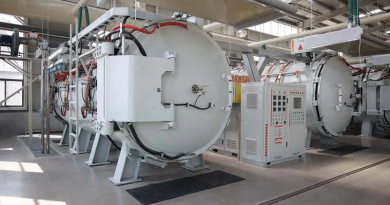Choosing the Right Silicon Carbide Crucible for Your Furnace
Choosing the Right Silicon Carbide Crucible for Your Furnace
When it comes to high-temperature applications, selecting the appropriate crucible material is crucial for ensuring efficiency and safety in your furnace operations. Silicon carbide (SiC) crucibles have gained popularity due to their unique properties, making them suitable for a variety of applications, from metal casting to laboratory experiments. In this article, we will explore the key factors to consider when choosing the right silicon carbide crucible for your furnace, including the types of silicon carbide available, their benefits, and practical tips for selection and maintenance.
Understanding Silicon Carbide
Silicon carbide is a compound of silicon and carbon, renowned for its hardness and thermal stability. It can withstand extreme temperatures, making it an ideal choice for crucibles used in high-heat environments. SiC crucibles are typically produced through a sintering process that enhances their durability and wear resistance.
The unique structure of silicon carbide provides excellent thermal conductivity, which ensures even heat distribution during melting processes. Additionally, SiC is chemically inert, meaning it does not react with most metals and alloys, preserving the purity of your materials.
Types of Silicon Carbide Crucibles
There are several types of silicon carbide crucibles, each designed to meet specific needs based on the application’s requirements. Understanding these types can help you make an informed decision.
1. Silicon Carbide Clay Crucibles: These crucibles incorporate clay into the silicon carbide matrix, adding binding properties. They are more versatile and can be used for a range of applications, although they may not withstand as high temperatures as pure silicon carbide.
2. Pure Silicon Carbide Crucibles: Made entirely from silicon carbide, these crucibles offer superior thermal shock resistance and can handle extremely high industrial silicon carbide tube temperatures. They are ideal for melting ferrous and non-ferrous metals.
3. Silicon Carbide Graphite Crucibles: Combining graphite with silicon carbide enhances the crucible’s ability to withstand thermal shock and increases its life span. These are commonly used in casting applications where rapid temperature changes occur.

4. High-Density Silicon Carbide Crucibles: These crucibles are manufactured using high-density processing techniques, providing exceptional strength and resistance to wear. They are particularly suited for industrial applications requiring prolonged use.
Benefits of Using Silicon Carbide Crucibles
Selecting a silicon carbide crucible offers numerous advantages over traditional crucible materials such as clay or metal. Here are some of the key benefits:
1. High Thermal Stability: SiC crucibles can withstand temperatures exceeding 1600°C without deforming, making them suitable for high-temperature melting processes.
2. Excellent Thermal Conductivity: The ability of silicon carbide to conduct heat efficiently leads to faster melting times and energy savings.
3. Chemical Resistance: Silicon carbide is highly resistant to oxidation and can handle various molten metals without reacting, ensuring the integrity of the materials being processed.
4. Durability: SiC crucibles are less prone to cracking or breaking under thermal stress, leading to reduced downtime and replacement costs.
5. Lightweight: Compared to metal crucibles, silicon carbide crucibles are lighter, which can simplify handling and reduce labor costs.
Factors to Consider When Choosing Silicon Carbide Crucibles
When selecting the right silicon carbide crucible for your furnace, consider the following factors:
1. Temperature Requirements: Assess the maximum temperature your application will require. Choose a crucible that can comfortably exceed this temperature to ensure longevity.
2. Material Compatibility: Ensure that the crucible material is compatible with the substances being melted or processed. Some metals may require specific crucible types to prevent contamination.
3. Size and Shape: The crucible’s size and shape must fit within your furnace while also accommodating the volume of material you intend to process. A well-fitted crucible maximizes efficiency and minimizes heat loss.
4. Thermal Shock Resistance: If your application involves rapid temperature changes, prioritize crucibles with high thermal shock resistance to avoid cracking.
5. Cost vs. Performance: While budget constraints are important, weigh the cost against the performance benefits. Investing in a high-quality crucible can save money in the long run through reduced replacements.
Maintenance and Care of Silicon Carbide Crucibles
Proper maintenance is essential for prolonging the life of your silicon carbide crucibles. Here are some practical tips:
1. Pre-Heating: Gradually preheat your crucible before introducing it to high temperatures. This step helps to mitigate thermal shock.
2. Cleaning: After use, allow the crucible to cool down naturally. Clean it gently to remove any residues, avoiding harsh chemicals that could degrade the material.
3. Storage: Store crucibles in a dry, stable environment to prevent moisture absorption, which can compromise their structural integrity.
4. Inspection: Regularly inspect your crucibles for signs of wear or damage. Addressing issues early can prevent larger problems down the line.
5. Usage Guidelines: Follow manufacturer guidelines regarding the maximum load and usage frequency to ensure optimal performance.
Applications of Silicon Carbide Crucibles
Silicon carbide crucibles are widely used in various industries and applications, owing to their versatility and reliability. Here are some common applications:
1. Metal Melting: Used extensively in foundries for melting metals like aluminum, copper, and brass, silicon carbide crucibles can handle the high temperatures required for these processes.
2. Laboratory Research: In laboratories, SiC crucibles are employed for high-precision experiments involving chemical reactions at elevated temperatures.
3. Glass and Ceramics Production: The glass and ceramics industries benefit from the thermal stability and chemical resistance of silicon carbide crucibles during the melting and forming processes.
4. Jewelry Making: Jewelers often use SiC crucibles for casting precious metals due to their ability to maintain purity and withstand high melting temperatures.
5. Cement and Refractory Industries: In these industries, SiC crucibles facilitate high-temperature processes involved in the production of various materials.
Conclusion
Choosing the right silicon carbide crucible for your furnace is a critical decision that impacts the efficiency, safety, and quality of your operations. By understanding the different types of silicon carbide crucibles, their benefits, and practical considerations for selection, you can make an informed choice that meets your specific needs. Proper maintenance and care will further enhance the performance and lifespan of your crucibles, ensuring optimal results in your high-temperature applications. Whether you are involved in metal casting, laboratory research, or manufacturing processes, investing in quality silicon carbide crucibles is essential for achieving success in your projects.
https://hearingearly.com/




